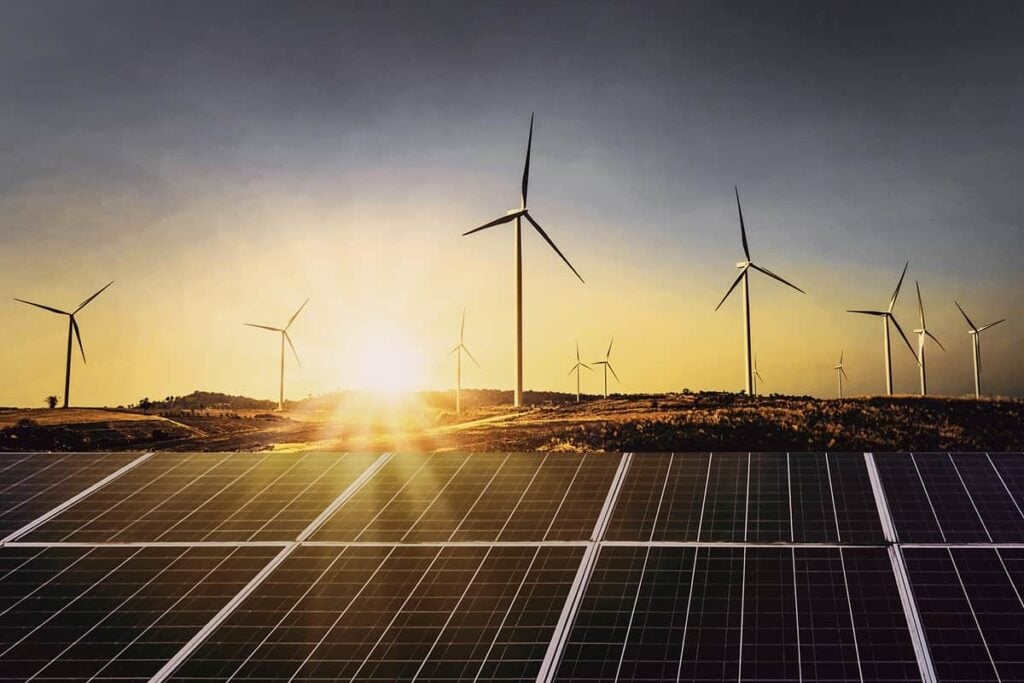5 Chinese Electric Utility Companies to Invest In
Table of contents

We can’t stop talking about how China is kicking America’s ass in just anything they put their minds to lately. This shouldn’t be a big surprise as there are 1.4 billion of them working 9-9-6, as opposed to some of the tools we have here in America who think all those horrible founders in Silicon Valley “work too much“. Besides the obvious advantage in numbers, China’s economic policies are also becoming more and more progressive. While the U.S. administration talks about bringing back the good ol’ days of coal, China is moving in exactly the opposite direction. The country is the number one producer and consumer of electricity in the world, producing about 1.5 times the amount the U.S. does. Chinese electricity is also very cheap, which is why they dominate in bitcoin mining:

It was during that article on bitcoin mining that we started to think about investing in Chinese electric utility companies as an investment thesis with the main points being:
- China has 1.4 billion consumers who need electricity
- China is focusing more on renewable energy, and leads in both solar and wind power globally
- China will use more electricity as they move to electrify their transportation fleets
- Utilities are a “safe” sector which gives us exposure to China’s growth story along with some income to boot
There’s also one more thing to consider that’s both a blessing and a curse.
China’s Excess Electricity
Presently, most regions in China have 10-40% excess capacity compared to peak demand, and this capacity will be increased by up to 20% by 2020. What do they plan to do with all this spare electricity? Transporting or storing excess electricity is expensive, and it’s particularly a problem with renewables – the wind doesn’t always blow and the sun doesn’t always shine.
In order to increase their reliability on renewables, the Chinese grid will need to work on storage solutions like pumped-storage hydroelectricity, or efficiently transport the electricity somewhere else to be used. China’s answer is not storage, but rather transportation. Ultra-high voltage (UHV) cable technology is unique to the country at the moment, and is capable of transporting electricity commercially across vast distances and with massive loads. As growth of internal demand is slackening, China plans to use UHV cable networks to export excess power as well. The country has invested $123 billion since 2013 to expand its reach to foreign electricity grids according to the Financial Times:

China’s plan is to achieve a global electricity grid, supplied by wholly renewable sources. Going back to our original investment thesis, we can now see how investing in Chinese electricity means a long-term bet on export growth as well. This means you will be able to hedge your exposure to the Chinese dollar (the yuan) when foreign dollars start flowing in. Now that we’ve presented the thesis, let’s talk about some Chinese electric companies.
China’s top 5 players in the electric power industry are all state-owned enterprises with listed subsidiaries acting as independent power producers. We used the composition of iShares MSCI China and iShares MSCI China A to determine the investable market and researched the top 5 companies according to market cap who generate and/or sell electricity in the country. For your reference, power output of the companies is expressed in megawatts (MW). To put that in context, 1 MW can supply about 650-1000 homes with electricity, depending on the type of power and consumption profile.
China Shenhua Energy

Shenhua Energy is renovating its power plants to achieve ultra-low emissions from operations and prepare for the 2018 launch of the carbon emissions trading market. Emission intensity for soot, sulfur dioxide and nitrogen oxides of renovated coal-fired power generators was reduced by 29.5%, 16.7%, and 6.3% in 2017, respectively. Shenhua Energy and GD Power Development Co., another power utility company of China listed in Shanghai with a market cap of $7.7 billion, formed a joint venture (JV) this March by merging their coal-fired generating assets. The JV was prompted by the government’s supply-side structural reform which aims to rid excess production capacities and increase efficiency.
China Yangtze Power Co


CYPC plans to expand operations along the Yangtze River basin in the short-to-midterm, and is developing a power distribution business with the Three Gorges Dam as the hub of operations.
China National Nuclear Power

CNNP was established as a subsidiary of China National Nuclear Company, a state-owned entity, which transferred the ownership of existing nuclear power plants to CNNP. After an IPO in 2014, the company managed to raise funding for the construction of nine new nuclear power units while still keeping close to 75% of the company owned by the Chinese state. At the end of 2015, the company had 14 operating power units with an installed capacity of 11,500 MW and 11 new units under construction with an output of 12,000 MW.
Huaneng Power International Inc
Founded in 1994, Huaneng Power International Inc (NYSE:HNP) is one of China’s largest independent power producers, generating electricity from coal, gas, hydro, wind, and solar. Huaneng Power has a market cap of $13 billion and an installed capacity of 104,301 MW. The company posted a revenue of $22 billion (+9% vs 2016) and a profit of $264 million (-83% vs 2016) last year. The drop in profits was mainly attributable to a sharp increase in coal prices as most of HNP’s generating capacity is dependent on coal. HNP has paid dividends in nine of the past ten years with varying amounts, with an average 5-year yield of 6.26% and a current yield of 2.44% according to Morningstar. Their 2017 Annual Report lists China’s power industry reform, environmental regulation, and electricity dispatch quotas as posing significant risks for the business.
China General Nuclear Power Corporation
Founded in 1994, China General Nuclear Power Corporation (1816.HK) is a nuclear power generation company with an $11.7 billion market cap. They build, operate, and manage nuclear plants and sell electricity output, and are responsible for close to 60% of installed nuclear capacity in mainland China. CGN posted revenues of $6.9 billion (+38.7% vs 2016) and a profit of $1.4 billion (+30.4% vs 2016) in 2017, and has a current dividend yield of 4.11% in Morningstar’s database. The company manages 20 nuclear power generating units with a capacity of 21,470 MW, and is in the process of constructing 8 more with a capacity of 10,270 MW. Besides their main business, CGN is running international nuclear, wind, solar, fuel cell, and biomass projects around the globe.

CGI is planning to sell new shares equivalent to a 10% stake to finance their expansion of nuclear capacity, according to a filing submitted to the Hong Kong Stock Exchange this February.
Note on Dividend Yield
Income investors are often attracted to utilities because they pay consistent (and usually larger than normal) dividends. The “size” of that dividend relative to the stock price is referred to as the “yield”. In the process of writing this article, we found it difficult to obtain historical dividend information that reflected any sort of consistency, so we provided “average yield” (in most cases) to provide some idea of what historical dividends have been like. When it comes to “current yield”, this reflects the yield based on the last dividend paid and today’s stock price. In many cases, this is a very backwards way (literally and figuratively) to measure yield because dividend payout amounts can vary drastically. This is why “dividend consistency” is so important, and that’s something that the concept of “dividend champions” manages to capture. The Chinese seem to be behind the U.S. when it comes to applying this concept to dividend policy.
Conclusion
Our underpaid MBAs work diligently to provide our lovely readers with insights on how to invest in disruptive technologies, and throughout that journey we’ve noticed that China keeps popping up. China is appearing as a disruptive force itself, a fact which many media outlets think should be swept under the carpet. We see China as a compelling investment theme and will continue to explore opportunities to invest there that align themselves with technology themes we cover.
Sign up to our newsletter to get more of our great research delivered straight to your inbox!
Nanalyze Weekly includes useful insights written by our team of underpaid MBAs, research on new disruptive technology stocks flying under the radar, and summaries of our recent research. Always 100% free.














